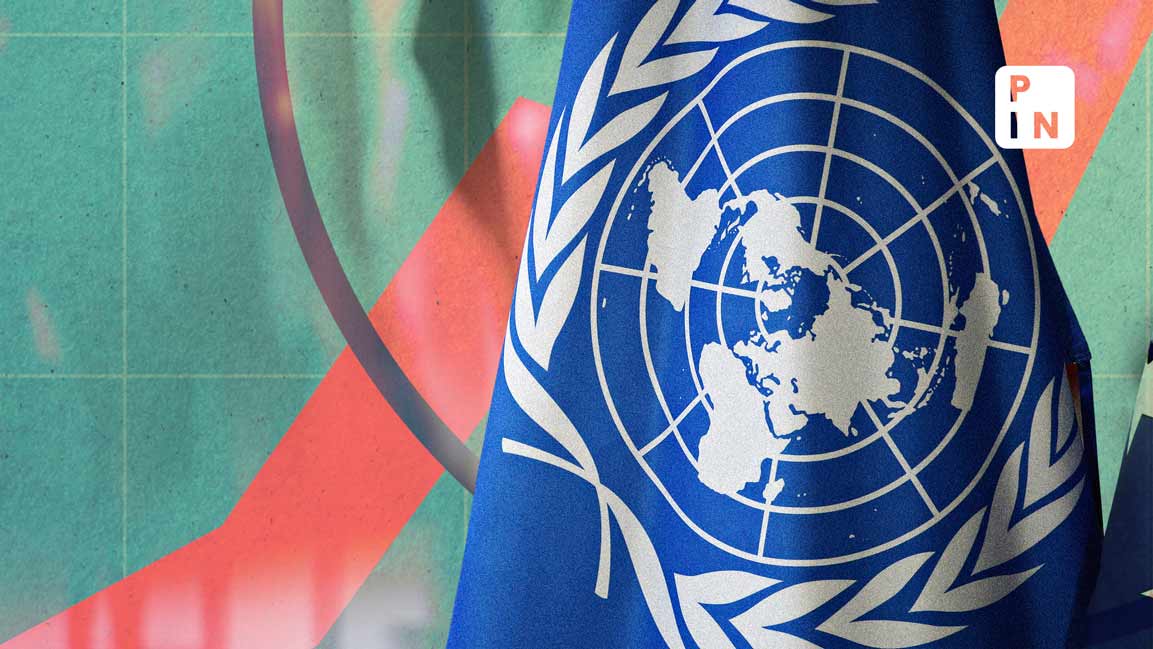- | 4:50 pm
India a bright spot in Asia-Pacific, UN report says
India’s performance has been helped by its lack of external exposure, the report said, adding that the growth drivers for the country are primarily domestic

India has become the world’s fastest-growing major economy in 2023 and a bright spot in the Asia-Pacific amid robust household consumption and public investment in infrastructure, a UN report said.
“India registered an economic growth rate of 6.8% in FY2023 supported by government spending on infrastructure and strong growth in manufacturing, mining and construction, which offset lower agricultural output,” the report, titled Economic and Social Survey of Asia and the Pacific (ESCAP) 2024, said.
India’s performance has been helped by its lack of external exposure, both to the developed world and to China, the report said, adding that the growth drivers for the country are primarily domestic.
The report noted that gross fixed capital formation, or investments in physical assets, rose by 9% in the final quarter of FY23 to reach a share of 34% of gross domestic product (GDP), the highest since 2012-13.
More recent developments are exerting new pressures on food prices in the region, the report pointed out while referring to global sugar and rice prices that have increased in the double digits since July 2023 due to El Niño-related weather disruptions and the impact of India’s temporary ban on some categories of rice exports last July.
On demographics, the report said the potential to boost domestic demand in some regional economies is largely due to favorable demographics.
The Asia-Pacific region is home to 600 million youth aged 15-24 years, with some countries such as India and several South-East Asian countries benefiting from growing numbers of young people, a phenomenon which is expected to continue up to 2050. This contrasts with some regional economies that are seeing rapidly ageing populations, notably China, Japan and the Republic of Korea.
While positive demographic forces offer an opportunity for some countries, taking advantage of these will require conscious policy choices by the governments. Policies are needed to increase the productivity of young labor, if they are to match the regional demand from the shrinking labor force in advanced regional economies, which have much higher productivity.
The productivity of non-farm workers in advanced regional economies is about eight times that of India, the study pointed out.
On unemployment, the report said the economic indicator should be analyzed in its disaggregated form to highlight where women or men bear the brunt. In India, where the dependency ratio is projected to be among the lowest among large economies for the next two decades, deep opportunities are available to leverage women’s economic and social talents as care demands may decrease in step, the study said.
Women’s roles in sectors such as manufacturing and tourism should also be integrated into macroeconomic analysis to inform appropriate policies that initiate change, it added.
The introduction of a unified value added tax (VAT) as the primary component of goods and services taxes (GST) can deliver both tax revenue gains and broad economic efficiency gains, as the case of India’s GST reform shows.
To further increase VAT revenue collection, it is desirable to rationalize reduced VAT rates and exemptions to broaden the tax base, it added.
Agricultural subsidies play a notable role in the region and are strongly related to climate change. In India, farm subsidies reached 2% of GDP in 2019 and constituted about one-fifth of aggregate farm income, while also helping to raise agricultural productivity.
An additional 1.2% of GDP was spent on government food subsidies in fiscal 2021-22 as part of policies aimed at reducing rural poverty.
On climate, the report said that globally about 2.2% of working hours are estimated to be lost due to rising temperatures. In developing countries, total output losses due to heat stress are estimated at 1.5–4% of GDP annually.
South Asia is one of the region’s most seriously affected, with India expected to lose about 5.8% of daily working hours due to heat stress in 2030.
The problem is most severe for outdoor workers, particularly those employed in agriculture and construction, but also relevant for indoor factory workers.
Growth in Asia-Pacific
Average economic growth in the developing Asia-Pacific region picked up from 3.5% in 2022 to 4.8% in 2023.
The rebound was concentrated in only a few large economies though, such as in China after it lifted pandemic restrictions and in the Russian Federation due to higher military-related investments.
Elsewhere in the region, output growth in most economies moderated in 2023. Export-oriented countries faced weak external demand, especially from China and Europe.
Tourist arrivals in the region stood at only 62% of pre-pandemic levels compared with the global average of 87%. On the domestic front, although global commodity prices have receded from their 2022 peaks, household consumption remained restrained due to a relatively high average rate of inflation at 5.2% in 2023, the report said.
“Governments of developing countries across Asia and the Pacific are victims of an unjust, outdated and dysfunctional global financial architecture. They face fiscal constraints, rising borrowing rates with shorter loan maturity, and heavy debt burdens,” United Nations Secretary-General António Guterres said in the foreword to the report.
“Up to half of low-income countries in the region are already in, or at high risk of, debt distress, forced to choose between servicing debt or investing in education, health and social protection for their people,” he added.
“Beyond managing near-term macroeconomic challenges, governments of countries in the region have a major task at hand. At the current pace of implementation, there will be a staggering 32-year delay before the Sustainable Development Goals have been achieved,” UN under-secretary-general and executive secretary of ESCAP Armida Salsiah Alisjahbana said in the preface to the report.
“To significantly accelerate progress towards achieving these goals, more investment is urgently needed in such transformative areas as energy, digital connectivity, social protection and climate change,” she added.













